The Lost Submersible That Ignited Controversy
On June 18, 2023, a bizarre accident occurred deep in the North Atlantic Ocean—the loss of the submersible Titan. Its backstory, and the details of this tragedy, sparked a controversy that captivated the world's attention.

It Began With OceanGate
The truth about the doomed submersible begins with OceanGate—a private company founded by Stockton Rush and Guillermo Söhnlein in 2009. Beginning in 2010, they began providing a unique service.
 Isabeljohnson25, CC BY-SA 4.0, Wikimedia Commons
Isabeljohnson25, CC BY-SA 4.0, Wikimedia Commons
They Transported Them To Shipwrecks
For a price, OceanGate could give clients access to a submersible, guiding them in underwater adventures. These locations included the Atlantic Ocean, the Gulf of Mexico, and the California coast.
However, their greatest selling point was the prospect of visiting shipwrecks—and as we all know, one shipwreck is more famous than all the others.
 Lori Johnston, Wikimedia Commons
Lori Johnston, Wikimedia Commons
The Titanic Was A Major Selling Point
Speaking to Smithsonian magazine in 2019, Stockton Rush said, "There's only one wreck that everyone knows ... If you ask people to name something underwater, it's going to be sharks, whales, Titanic".
Little did he know, the Titanic would eventually become a threat to human life all over again.
The Discovery Of Titanic
The fascination surrounding the Titanic has never truly abated. After all, it was a nightmare of epic proportions, claiming the lives of over 1,500 people after it sank in 1912. However, it wasn't until 1985 that the site of the shipwreck was finally discovered.
 Lori Johnston, Wikimedia Commons
Lori Johnston, Wikimedia Commons
It Became A Destination For The Elite
320 miles off the coast of Newfoundland, the sad remains of Titanic rest on the ocean floor—12,500 feet deep. Researchers and even tourists wanted to experience seeing the doomed ocean liner. As of 2023, only 250 people have had the chance to see it.
However, it was this very desire that eventually led the Titan to its twisted end.
It Could Carry Five People
Before being named Titan, the submersible was actually called Cyclops 2. It could only carry five people and was almost seven meters long. Constructed out of titanium and carbon fiber, the vessel weighed in at 23,000 lbs.
But when it came to its materials and design, there were some incredibly worrying details.
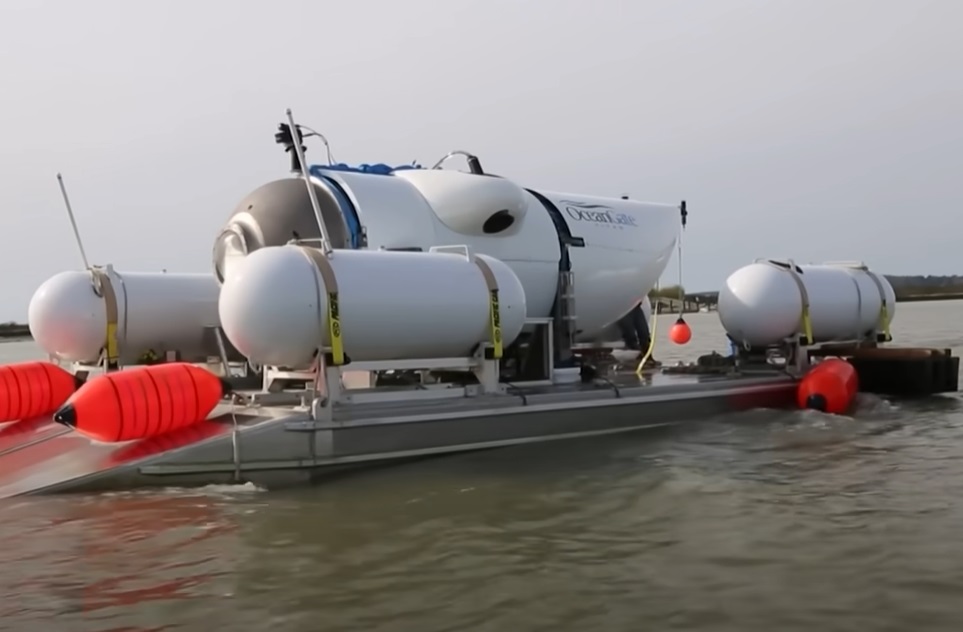 7News, Fatal Flaws: The OceanGate Story (2024)
7News, Fatal Flaws: The OceanGate Story (2024)
It Underwent Several Changes
You see, though the Titan's initial design allowed the vessel to reach a depth of 13,000 ft, the indication of cyclic fatigue led to a change in the hull's design. The hull underwent a major change—but this didn't increase its depth rating, quite the opposite.
In the end, the Titan would only be able to reach a depth of 9,800 ft. But that wasn't the most unsettling part.
 7News, Fatal Flaws: The OceanGate Story (2024)
7News, Fatal Flaws: The OceanGate Story (2024)
Made With Discounted Materials
The hull eventually underwent another overhaul in 2020 and 2021. Stockton Rush later revealed something chilling to the editor-in-chief at Travel Weekly. Apparently, they had sourced discounted carbon fiber from Boeing. Why was it discounted, you may ask?
 7News, Fatal Flaws: The OceanGate Story (2024)
7News, Fatal Flaws: The OceanGate Story (2024)
Boeing Doesn't Have The Receipts
Well, the carbon fiber just wasn't up to scratch for Boeing to use—it was too old. However, according to Boeing, they don't have a paper trail of the sale of these materials to OceanGate. If this sounds shady, buckle up—it gets worse.
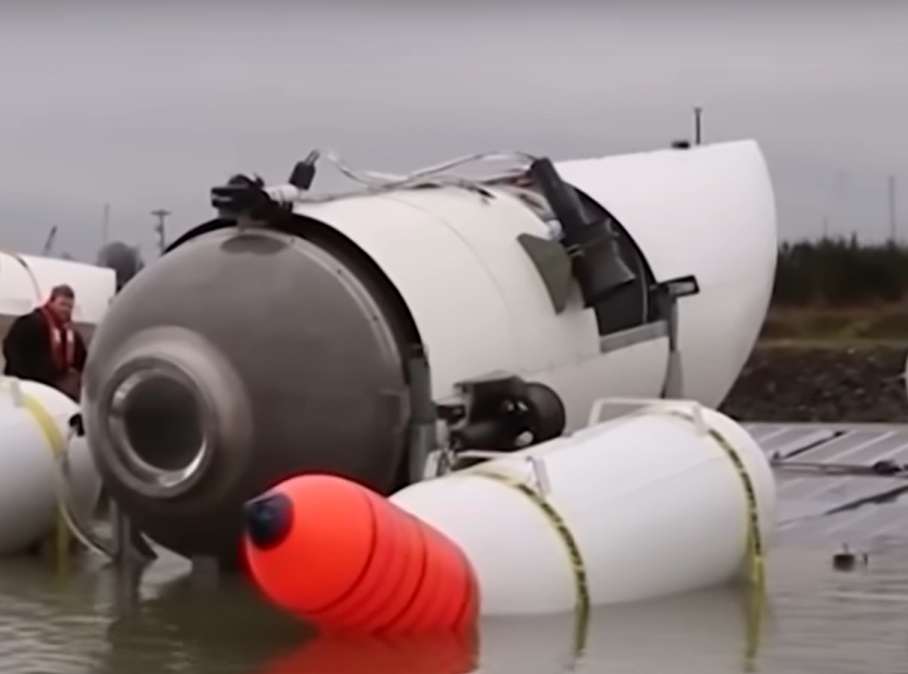 7News, Fatal Flaws: The OceanGate Story (2024)
7News, Fatal Flaws: The OceanGate Story (2024)
They Didn't Follow Safety Protocols
OceanGate also failed to get the Titan properly certified—and their reason for this oversight was jaw-dropping. Reportedly, they believed that safety measures would hold them back.
As well, when the company attempted to class Titan in 2019, Lloyd's Register denied them.
 7News, Fatal Flaws: The OceanGate Story (2024)
7News, Fatal Flaws: The OceanGate Story (2024)
Video Game Controllers Steered It
Perhaps one of the most disturbing details to come to light was Titan's steering controls. Video game controllers were used to guide the vessel. However, it's also important to keep in mind that game controllers such as these are also used to direct remote-controlled vehicles and submarine periscopes.
 7News, Fatal Flaws: The OceanGate Story (2024)
7News, Fatal Flaws: The OceanGate Story (2024)
Going On "Missions"
OceanGate would take its clients on what they called "missions". These missions would dive down to the site of Titanic's wreck over the course of several days. During 2021 and 2022, there were five of these intense excursions.
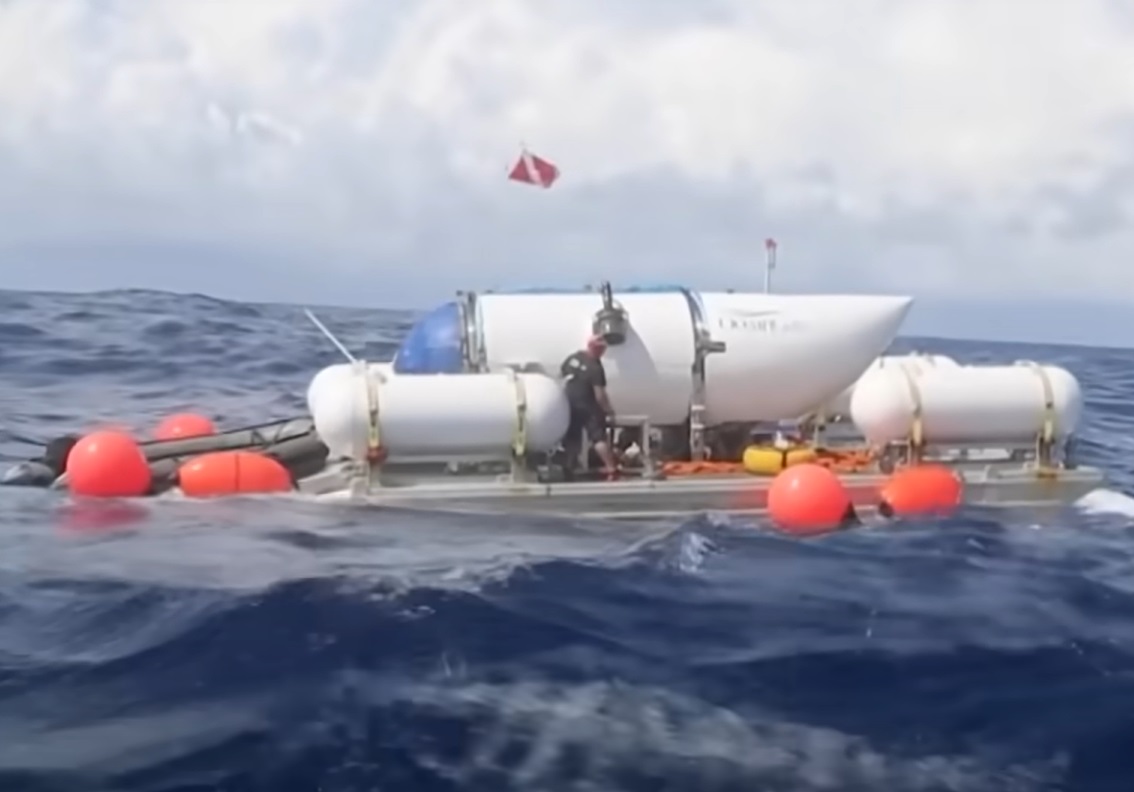 7News, Fatal Flaws: The OceanGate Story (2024)
7News, Fatal Flaws: The OceanGate Story (2024)
Two Dive Attempts
During these trips to Titanic, there would usually be two dive attempts. Sometimes, though, complications arose, including poor weather conditions and technical problems.
Here's how a dive usually went down...
 7News, Fatal Flaws: The OceanGate Story (2024)
7News, Fatal Flaws: The OceanGate Story (2024)
A Claustrophobic Journey
On board the submersible, there would be five passengers: three paying clients accompanied by a guide and a pilot. It was a very claustrophobic experience as once the hatch closed on them, they'd be locked in from the outside, meaning there was no chance of them getting out on their own.
 7News, Fatal Flaws: The OceanGate Story (2024)
7News, Fatal Flaws: The OceanGate Story (2024)
An Eight-Hour Descent
Then came the lengthy descent to the bottom of the ocean. It would usually take around eight hours for the vessel to reach the wreckage site.
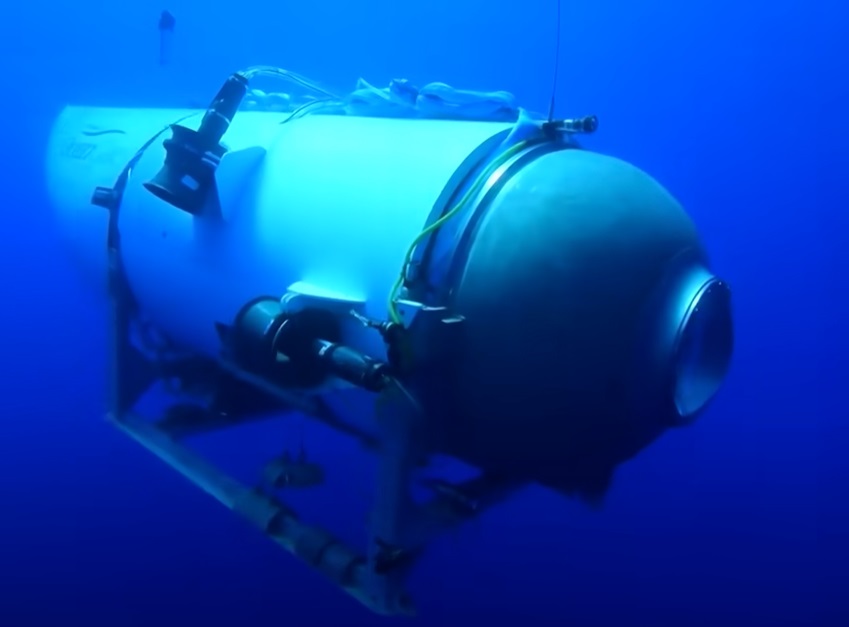 7News, Fatal Flaws: The OceanGate Story (2024)
7News, Fatal Flaws: The OceanGate Story (2024)
They Sent Out A Safety Signal
During these expeditions, the crew waiting at the surface communicated with the submersible through text messages every 15 minutes. However, more importantly, every five to ten seconds, the vessel sent out a safety ping.
But though this all sounds quite daunting, the experience didn't come cheap.
 7News, Fatal Flaws: The OceanGate Story (2024)
7News, Fatal Flaws: The OceanGate Story (2024)
Only The Very Wealthy Could Afford The Trip
Anyone hoping to dive down to the Titanic had to pay $250,000 in US currency. This would cover their eight-day adventure, and OceanGate would dub them a "mission specialist". Was it worth it?
For the passengers aboard the Titan in 2023, they all paid a high price to journey straight to their watery end.
 7News, Fatal Flaws: The OceanGate Story (2024)
7News, Fatal Flaws: The OceanGate Story (2024)
The Lack Of Safety Regulations
Probably one of the most important aspects of this story is the safety of the entire operation. The Titan didn't have to meet any safety regulations for two reasons. Firstly, it undertook its mission in international waters, and secondly, it was not leaving a port with its passengers. But this wasn't the only red flag.
 7News, Fatal Flaws: The OceanGate Story (2024)
7News, Fatal Flaws: The OceanGate Story (2024)
They Had To Sign An Unsettling Waiver
There was no regulatory body to inspect the capabilities and seaworthiness of Titan. According to the reporter David Pogue, who went on one of the missions himself, every passenger had to sign a waiver.
The details of this waiver were actually quite scary.
 7News, Fatal Flaws: The OceanGate Story (2024)
7News, Fatal Flaws: The OceanGate Story (2024)
It Was An "Experimental" Vessel
Reportedly, this waiver made passengers acknowledge that they understood the Titan to be an "experimental" vessel—one "that has not been approved or certified by any regulatory body, and could result in physical injury, disability, emotional trauma or death".
 7News, Fatal Flaws: The OceanGate Story (2024)
7News, Fatal Flaws: The OceanGate Story (2024)
The Founder Ran His Mouth
Unfortunately, when it came to the lax safety regulations, there have been some statements made by OceanGate founder Stockton Rush that have not aged well.
 7News, Fatal Flaws: The OceanGate Story (2024)
7News, Fatal Flaws: The OceanGate Story (2024)
He Thought Safety Was A "Pure Waste"
Stockton Rush spoke to CBS News in 2022 and shockingly said, "At some point, safety just is pure waste. I mean, if you just want to be safe, don't get out of bed. Don't get in your car. Don't do anything". Oh, but that's not even the worst quote you can find.
 7News, Fatal Flaws: The OceanGate Story (2024)
7News, Fatal Flaws: The OceanGate Story (2024)
He Broke Rules
Rush has also been quoted saying, "I've broken some rules to make [Titan]. I think I've broken them with logic and good engineering behind me. The carbon fiber and titanium, there's a rule you don't do that. Well, I did".
 7News, Fatal Flaws: The OceanGate Story (2024)
7News, Fatal Flaws: The OceanGate Story (2024)
He Gave Them A Major Discount
In 2023, the ill-fated Titan voyage was originally booked for May. Stockton Rush had presented two potential passengers with a hefty discount. Instead of charging the businessman Jay Bloom $250,000 per seat, he offered a rate of $150,000 a seat. This would apply to both Bloom and his son's spots on Titan.
However, Bloom's initial response was rather surprising.
One Choice Changed Everything
Though Rush had insisted that the dive would be "safer than crossing the street," Bloom completely rejected his generous offer, citing valid concerns about the safety of the Titan submersible. This one decision ended up saving his life.
 7News, Fatal Flaws: The OceanGate Story (2024)
7News, Fatal Flaws: The OceanGate Story (2024)
He Didn't Trust OceanGate
A year later, Bloom talked to People magazine and shared his experience with Stockton Rush: "Every time I asked him important questions, not just about the safety, but about the project itself or who's behind it and who's involved, he dodged them. He flipped it around on me, and got mad just for questioning him. He would say I was young, I didn’t understand the industry. So I said we just aren’t going to go".
 OceanGate, CC BY 3.0, Wikimedia Commons
OceanGate, CC BY 3.0, Wikimedia Commons
The Day Of The Mission
On June 18, 2023, at 5:15 am, "Mission Five" reached the general location of the Titanic's shipwreck. Five passengers boarded Titan and prepared for what OceanGate called "Dive 88".
 7News, Fatal Flaws: The OceanGate Story (2024)
7News, Fatal Flaws: The OceanGate Story (2024)
The Passengers: Stockton Rush And Paul-Henri Nargeolet
First, there was 61-year-old Stockton Rush himself. Then there was 77-year-old Paul-Henri Nargeolet, who had a lot of experience under his belt. Nargeolet was a submersible pilot just like Rush, but he was also a diver and former commander in the French Navy. This also wasn't Nargeolet's first time visiting the Titanic.
He was an expert on the wreck site and had already visited it 35 times. The three other passengers, though, were very excited about this very special experience.
The Passengers: Hamish Harding
58-year-old Hamish Harding was no stranger to adventure. As an aviator and space tourist, he'd already visited space and set a record for circumnavigating the world. Unfortunately, this would be his very last trip.
 Victoria Sirakova, Getty Images
Victoria Sirakova, Getty Images
The Passengers: Shahzada Dawood And Suleman Dawood
The final two passengers were a father and son duo: 48-year-old Shahzada Dawood and 19-year-old Suleman Dawood. They took the spots that would have originally gone to Jay Bloom and his son. Dawood came from a wealthy business-oriented family and was a philanthropist himself. But there's a tragic detail to this father-son adventure.
The Passengers: Shahzada Dawood And Suleman Dawood
You see, Dawood's wife Christine was originally going to accompany him on the Titan. However, she generously relinquished her seat so that her son Suleman could enjoy the experience. She had no clue that her decision carried such weight.
A Smooth Start
At 9:18 am, Titan was finally on its way. For the first 90 minutes of the journey, everything seemed to go swimmingly, with the vessel sending their consistent safety pings. Even after descending 7,461 ft, Titan seemed safe and secure, communicating "all good here". But things went south fast.
 7News, Fatal Flaws: The OceanGate Story (2024)
7News, Fatal Flaws: The OceanGate Story (2024)
The Final Text Message
At 10:47:27 am, one final text message came through: "dropped two wts". They were at a depth of around 10,961 ft. At nearly the same time, one last ping also came through. That's when all communication ceased.
 7News, Fatal Flaws: The OceanGate Story (2024)
7News, Fatal Flaws: The OceanGate Story (2024)
Officially Missing
Titan failed to return at the expected time of 4:30 pm. The submersible and its five passengers were officially missing. It was time to get the US Coast Guard involved.
If the submersible hadn't already imploded, it would be a race against time to rescue them.
 7News, Fatal Flaws: The OceanGate Story (2024)
7News, Fatal Flaws: The OceanGate Story (2024)
Only 96 Hours Of Breathable Air
You see, the amount of breathable air available to the passengers was just 96 hours. This meant they had until the morning of June 22 to find Titan. There was, however, good reason to believe that the vessel had already met a dark end.
 7News, Fatal Flaws: The OceanGate Story (2024)
7News, Fatal Flaws: The OceanGate Story (2024)
A Possible Implosion
You see, hours after Titan disappeared beneath the surface, an alarming acoustic signal reached a US Navy acoustic detection system—what seemed like an implosion. Still, a major search operation for the vessel commenced, but finding it wasn't an easy task.
 7News, Fatal Flaws: The OceanGate Story (2024)
7News, Fatal Flaws: The OceanGate Story (2024)
A Difficult Rescue Mission
According to the US Coast Guard, poor weather and sea conditions—as well as darkness and the water temperature—hindered the rescue mission. To make matters worse, Titan did not have acoustic beacons, which would have made it easier to find.
 7News, Fatal Flaws: The OceanGate Story (2024)
7News, Fatal Flaws: The OceanGate Story (2024)
Trying To Hold On To Hope
A spokesperson for the US Coast Guard tried to maintain a positive outlook at a press conference, announcing, "This is a search and rescue mission 100%", rather than a wreckage recovery mission".
However, with the hours ticking on by, the hard truth was that if the passengers were still alive, they faced a dwindling air supply.
 7News, Fatal Flaws: The OceanGate Story (2024)
7News, Fatal Flaws: The OceanGate Story (2024)
People Waited With Bated Breath
News of the missing OceanGate submersible captivated the world. People followed the story for days, wondering if and when Titan would be found. On June 22, they got their answer.
 7News, Fatal Flaws: The OceanGate Story (2024)
7News, Fatal Flaws: The OceanGate Story (2024)
A Tell-Tale Debris Field
On that fateful day, the search efforts finally made a disturbing discovery. Close to the Titanic's shipwreck, they'd found an ominous debris field. Eventually, confirmation about the debris came through: It was indeed remnants of the Titan.
 United States Coast Guard, Wikimedia Commons
United States Coast Guard, Wikimedia Commons
They Announced Titan's Fate
At 4:30 pm on the same day, the US Coast Guard had to break the tragic news to the public. At a press conference in Boston, they shared that the Titan had imploded—and that pieces of the submersible had been identified on the ocean floor.
 U.S. Coast Guard, Wikimedia Commons
U.S. Coast Guard, Wikimedia Commons
The Vessel Imploded
The nature of the debris painted a grim picture of what actually happened. According to Rear Admiral John Mauger, it indicated that there was a "catastrophic loss of the pressure chamber".
 U.S. Coast Guard, Wikimedia Commons
U.S. Coast Guard, Wikimedia Commons
Finding The Passengers
When it came to the recovery of Titan's debris, there was another morbid aspect of the disaster to investigate—the human remains. Though there was DNA testing carried out, it wasn't until a public hearing in 2024 that they shared the results. All five passengers had been positively identified.
But what were their final moments truly like?
 7News, Fatal Flaws: The OceanGate Story (2024)
7News, Fatal Flaws: The OceanGate Story (2024)
A Painless End
Based on a simulation done in 2023, it's likely that the implosion happened so quickly that the victims didn't even know what hit them. It likely took place in less than one second, causing them to pass instantly and painlessly.
However, in the wake of this tragedy, there were still so many questions left to be answered. One of them being: Why did this disaster even happen in the first place?
 7News, Fatal Flaws: The OceanGate Story (2024)
7News, Fatal Flaws: The OceanGate Story (2024)
What Caused The Implosion?
Much speculation has surrounded the root cause of Titan's demise. The two most popular theories are that the carbon fiber hull failed due to a manufacturing error, or, that there may have been a problem with the acrylic window.
However, the truth might be even more difficult to swallow.
 7News, Fatal Flaws: The OceanGate Story (2024)
7News, Fatal Flaws: The OceanGate Story (2024)
We Can Never Know For Sure
A co-founder of OceanGate who eventually exited the company, Guillermo Söhnlein, weighed in on the investigation. He believes nobody can ever be entirely sure what happened to Titan: "I don’t know who made what decision when and based on what information. And honestly, I don’t know if any of us will ever know this, despite all of your team’s investigative efforts".
However, there are some concrete facts about the Titan that might send a chill up your spine.
 7News, Fatal Flaws: The OceanGate Story (2024)
7News, Fatal Flaws: The OceanGate Story (2024)
The Titan's Equipment Issues
In a devastating twist, it turns out that the submersible had been encountering equipment issues two years prior to its final descent—over 100 issues, actually.
 7News, Fatal Flaws: The OceanGate Story (2024)
7News, Fatal Flaws: The OceanGate Story (2024)
It Malfunctioned Several Times
For instance, in 2021, a test dive went horrifically wrong when the Titan lost its forward dome. Despite failings such as this, the submersible still went on an expedition the same year. Unsurprisingly, it experienced mechanical issues and the expedition had to be canceled. And that's not all.
 7News, Fatal Flaws: The OceanGate Story (2024)
7News, Fatal Flaws: The OceanGate Story (2024)
They Ignored All The Warning Signs
Even days before the implosion, there had been a malfunction. According to the marine scientist Steven Ross, something went wrong with the vessel's buoyancy, throwing the passengers around: “One passenger was hanging upside down. The others managed to wedge themselves into the bow end cap".
With such warning signs going ignored, much of the blame has to be placed on OceanGate's shoulders—especially co-founder Stockton Rush.
 7News, Fatal Flaws: The OceanGate Story (2024)
7News, Fatal Flaws: The OceanGate Story (2024)
Former Employees Testified
One of OceanGate's former employees was David Lochridge. For a time, Lochridge was the company's marine operations director until they fired him. He eventually testified that Stockton Rush had his eyes focused on only one goal: making money.
 7News, Fatal Flaws: The OceanGate Story (2024)
7News, Fatal Flaws: The OceanGate Story (2024)
It Was All About The Money
Referring to OceanGate, Lochridge shared, “The whole idea behind the company was to make money. There was very little in the way of science". Lochridge also claimed that the company terminated him because he had voiced his concerns about quality control. But he wasn't the only one.
 7News, Fatal Flaws: The OceanGate Story (2024)
7News, Fatal Flaws: The OceanGate Story (2024)
Experimental Materials
Engineering executive Tony Nissen had also been worried about the materials used by OceanGate. In one case, he addressed the experimental carbon fiber used to construct Titan's first hull. Following the failure of a test mission, he made a decision that enraged the company.
 7News, Fatal Flaws: The OceanGate Story (2024)
7News, Fatal Flaws: The OceanGate Story (2024)
He Refused To Get In The Titan
Nissen put his foot down when it came to allowing another test mission. He apparently told Rush, "I'm not getting in it". However, the problems didn't stop with the mechanics or materials.
 7News, Fatal Flaws: The OceanGate Story (2024)
7News, Fatal Flaws: The OceanGate Story (2024)
OceanGate's Worrisome Finances
The former director of administration also had some tea to spill about OceanGate's finances. Amber Bay eventually testified that the company struggled with money—even paying people was a stretch at times. Stockton often had to invest his own money, while the company deferred staff paychecks.
 7News, Fatal Flaws: The OceanGate Story (2024)
7News, Fatal Flaws: The OceanGate Story (2024)
Criticism Poured In
The media coverage for the OceanGate disaster was quite intense, and as the public became aware of the large-scale rescue mission, they began to share their opinions. Many were displeased with how much attention the Titan attracted.
 ITN, Minute by Minute: The Titan Sub Disaster (2024)
ITN, Minute by Minute: The Titan Sub Disaster (2024)
It Wasn't The Only Disaster
Considering the Titan only carried five people, some people were quick to compare the loss to that of the sinking of a Messenia migrant boat. This disaster had occurred just days before the Titan went missing. The media's response to it was dramatically different.
 7News, Fatal Flaws: The OceanGate Story (2024)
7News, Fatal Flaws: The OceanGate Story (2024)
Some Lives Seemed More Important Than Others
Though hundreds of people lost their lives when the Messenia migrant boat sank, some were quick to point out that the efforts to rescue the Titan, as well as the public interest it drew, were much stronger.
However, this wasn't the only reaction the disaster incited.
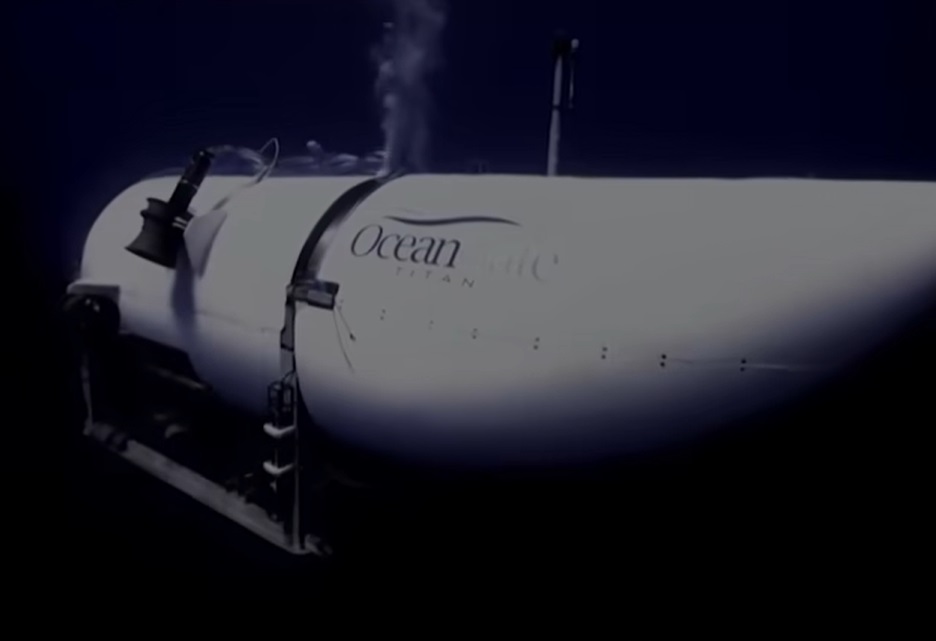 7News, Fatal Flaws: The OceanGate Story (2024)
7News, Fatal Flaws: The OceanGate Story (2024)
James Cameron Weighed In
Even the director of 1997's Titanic, James Cameron, put his two cents in. After all, he'd visited the famed shipwreck 33 times himself. He drew a direct connection between the fate of Titanic and the Titan.
 ITN, Minute by Minute: The Titan Sub Disaster (2024)
ITN, Minute by Minute: The Titan Sub Disaster (2024)
Senseless Tragedies
Cameron pointed out that there had been safety issues and red flags when it came to both the Titanic and the Titan—but all of them went unheeded. In his eyes, both tragedies could have been easily prevented. He also zeroed in on the material used to construct the submersible.
 ITN, Minute by Minute: The Titan Sub Disaster (2024)
ITN, Minute by Minute: The Titan Sub Disaster (2024)
Carbon Fiber Was A Terrible Choice
Cameron cast a critical eye on the carbon fiber used to make the Titan, saying that it had "no strength in compression". He believed that there were far better, and safer, materials that should have been used: ceramic, titanium, steel, or acrylic. But that wasn't all he condemned.
 7News, Fatal Flaws: The OceanGate Story (2024)
7News, Fatal Flaws: The OceanGate Story (2024)
The Real-Time Monitoring Was Useless
According to Cameron, Stockton Rush's monitoring of the Titan's hull was woefully insufficient. Though this may have been done in real time, the monitoring would in no way stop an implosion from happening. Considering all of this, the director voiced one heartbreaking regret.
 7News, Fatal Flaws: The OceanGate Story (2024)
7News, Fatal Flaws: The OceanGate Story (2024)
False Hopes
James Cameron truly wished he could have said something about the Titan earlier—before it even had the chance to descend. He also believed that the passengers' families had been given "false hopes" in what was obviously a hopeless situation.
The Obvious Answer
Both Cameron and his colleagues had come to the sad conclusion that the Titan was gone after all communication and tracking cut out at the same time. To them, this definitely meant that the vessel had imploded.
However, the response of social media was another beast altogether.
 7News, Fatal Flaws: The OceanGate Story (2024)
7News, Fatal Flaws: The OceanGate Story (2024)
The Response On Social Media
Online, the OceanGate disaster evolved into Internet memes and viral discourse on the poor construction of the submersible. Much of the commentary even poked fun and mercilessly criticized the victims who paid fortunes for their spots on such an unsafe vessel. In a twisted way, the whole debacle became a form of entertainment.
 ITN, Minute by Minute: The Titan Sub Disaster (2024)
ITN, Minute by Minute: The Titan Sub Disaster (2024)
The Whims Of Billionaires
Though many condemned the apathetic response online to the OceanGate disaster, it also highlighted how critical the public could be about the whims of billionaires. The tragedy certainly sparked debates, with the overwhelming sentiment of "eat the rich" becoming abundantly clear.
 7News, Fatal Flaws: The OceanGate Story (2024)
7News, Fatal Flaws: The OceanGate Story (2024)














